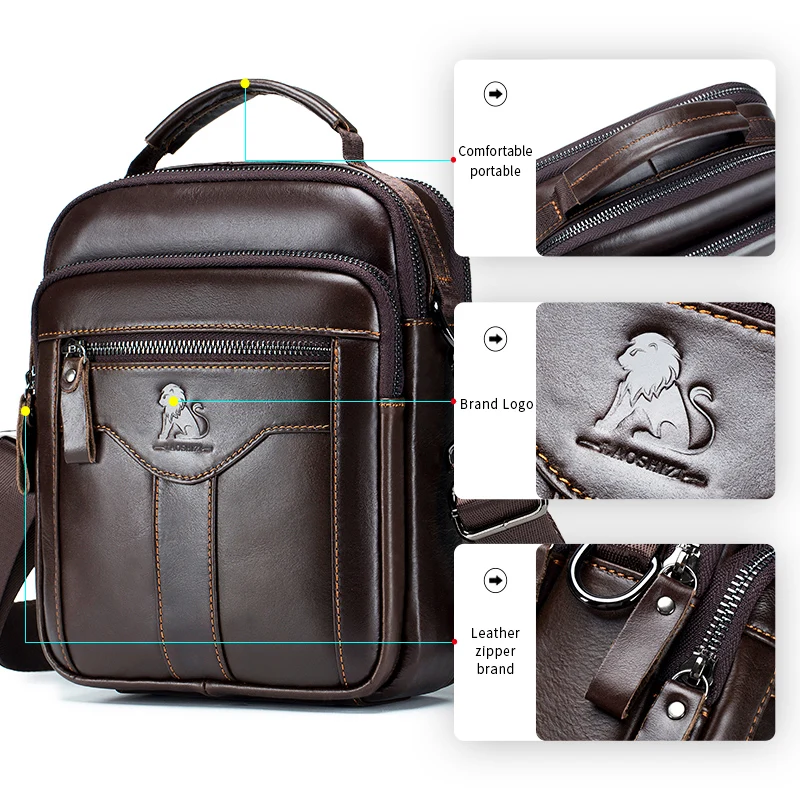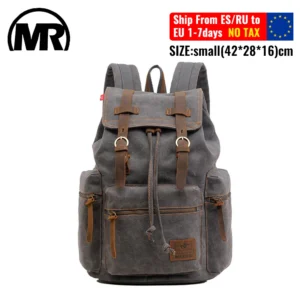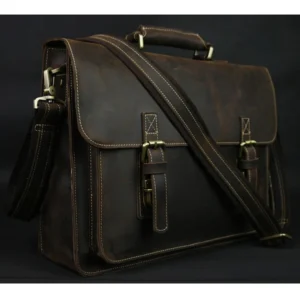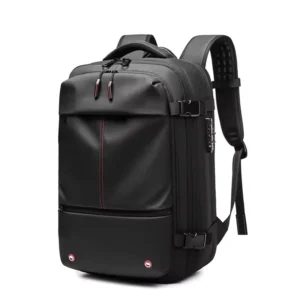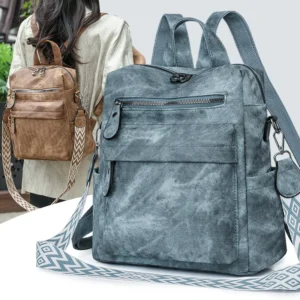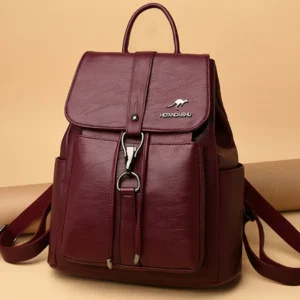Introduction
Finding the right leather work bag isn’t just about style—it’s about functionality that matches your daily professional needs. Many professionals struggle with bags that are either too small to hold their essentials or too large to carry comfortably throughout the day. This challenge is particularly relevant with leather work bags, where the material’s durability and structure add considerations beyond mere dimensions.
The “one size fits all” approach simply doesn’t work for professional leather bags. Your specific career, commute style, and daily carry requirements demand a tailored solution. A marketing executive who travels frequently needs different capacity than a teacher who carries textbooks, or an architect who transports large documents.
In this guide, we’ll explore practical sizing considerations beyond generic advice, helping you understand how dimensions translate to real-world functionality. Proper leather conditioning and waterproofing becomes even more important as bag size increases, affecting both appearance and longevity of your investment.
Understanding Your Professional Carry Requirements
Before exploring specific dimensions, take inventory of what you carry daily. This assessment should be comprehensive, not just focused on your laptop size:
- Technology: Laptop, tablet, smartphone, chargers, adapters, power banks
- Documents: Folders, notebooks, planners, documents, books
- Personal items: Wallet, keys, glasses, water bottle, umbrella, lunch container
- Industry-specific tools: Presentation materials, specialized equipment, samples
Different professions naturally have different requirements. Financial professionals might need space for multiple document folders and a secure compartment for sensitive materials. Creative professionals might require room for sketchbooks, tablets, and specialized tools.
Your commute method also significantly impacts size requirements. Public transit commuters often benefit from more compact designs that can be comfortably carried in crowded spaces, while those who drive may prioritize capacity over portability.
Consider seasonal variations too—winter commuting often requires space for additional layers or rain gear. The right leather work backpack should accommodate your needs year-round.
How to Properly Measure Your Laptop and Essentials
Many shoppers make the mistake of relying solely on the diagonal screen measurement (like “15-inch laptop”) when selecting a bag. This approach frequently leads to sizing mistakes. Here’s how to properly measure:
- Laptop dimensions: Measure the closed laptop’s width, height, and thickness
- Include protective cases: Add 0.5-1 inch to each dimension if you use a protective sleeve
- Account for odd shapes: Chargers, adapters, and other accessories often have awkward dimensions
Common laptop sizes with approximate dimensions:
– 13-inch laptops: ~12” × 8.5” × 0.6”
– 15-inch laptops: ~14” × 9.5” × 0.7”
– 16-inch laptops: ~14.5” × 10” × 0.7”
– 17-inch laptops: ~15.5” × 10.5” × 0.8”
Remember that these are generalizations—your specific device may vary. When in doubt, measure your actual laptop rather than relying on the screen size designation. Finding the right leather laptop backpack depends on accurate measurements of what you’ll be carrying.
Understanding Bag Dimension Terminology
Bag dimensions are typically presented as height × width × depth, though some manufacturers may list them differently. Understanding these measurements is crucial:
- Height: Measured from bottom to top when the bag is standing upright
- Width: The horizontal measurement from side to side at the widest point
- Depth: The measurement from front to back (sometimes called thickness)
Be aware of the distinction between external and internal measurements. External dimensions include the material thickness and any protruding pockets or hardware, while internal dimensions represent the actual usable space.
Capacity measurements are typically provided in liters or cubic inches and represent the total volume of the bag. A 15-20 liter bag is generally suitable for daily professional use, while anything over 25 liters moves into the larger capacity range.
Manufacturers may use different terms for these dimensions, so always look for visual diagrams when available. Conditioning leather backpacks properly helps maintain their dimensions and shape over time, especially important for work bags that need to keep their professional appearance.
Compact Professional Bags (13” Laptop Capacity)
Compact professional bags typically measure 10-12” in height, 14-15” in width, and 2-4” in depth. These dimensions are ideal for carrying:
- 13” laptop or smaller tablet
- Small notebook or planner
- Essential cables and charger
- Wallet, keys, and personal items
- Small water bottle (in some models)
These bags are perfect for minimalists, light commuters, and professionals who primarily work digitally with minimal paper materials. The advantages include exceptional portability, a sleek professional appearance that doesn’t overwhelm smaller frames, and reduced weight for comfortable all-day carry.
However, compact bags do have limitations. Their restricted capacity means you’ll need to be selective about what you carry, and they typically offer minimal organization compared to larger options. They’re not suitable for those who regularly transport multiple devices or extensive documentation.

The small leather backpack options available today often incorporate clever design elements to maximize their limited space, making them surprisingly functional despite their compact dimensions.
Standard Professional Bags (14-15” Laptop Capacity)
Standard professional bags represent the most versatile and popular size category, typically measuring 11-13” in height, 15-17” in width, and 4-6” in depth. This mid-range size comfortably accommodates:
- 14-15” laptop with protective sleeve
- Multiple document folders or a slim binder
- Standard notebook and planner
- Full complement of charging accessories
- Personal items and a water bottle
- Light lunch container in some models
These bags strike an excellent balance between capacity and professional appearance. They’re ideal for mid-career professionals, consultants who visit multiple clients daily, and anyone who needs moderate carrying capacity without excessive bulk.
When fully loaded, standard bags generally remain comfortable to carry throughout a workday. Popular styles in this category include traditional briefcases, messenger bags, and slim totes. The weight distribution in this size category typically remains manageable even when the bag is full.
For professionals seeking versatility, 15-inch leather laptop backpacks offer an excellent middle ground between compact bags that may be too restrictive and larger options that can feel cumbersome.
Large Capacity Professional Bags (16”+ Laptop Capacity)
Large professional bags typically measure 12-14” in height, 17-19” in width, and 6-8” in depth. These substantial dimensions accommodate:
- 16” or larger laptop with protective case
- Multiple document folders and binders
- Full-size notebooks and reference materials
- Complete set of accessories and chargers
- Personal items and full-size water bottle
- Lunch container and potentially a light change of clothes
These bags excel for professionals who transport extensive materials between locations, those with overnight business trips, or individuals who prefer to carry everything they might need. Legal professionals, creative directors with presentation materials, and sales representatives with product samples often benefit from this larger capacity.
However, size comes with tradeoffs. Weight becomes a significant consideration, particularly with leather construction. Quality materials and thoughtful design features like padded straps and reinforced handles become essential for comfort. Additionally, maintaining a professional appearance with a larger bag requires careful selection—oversized doesn’t have to mean bulky or casual.
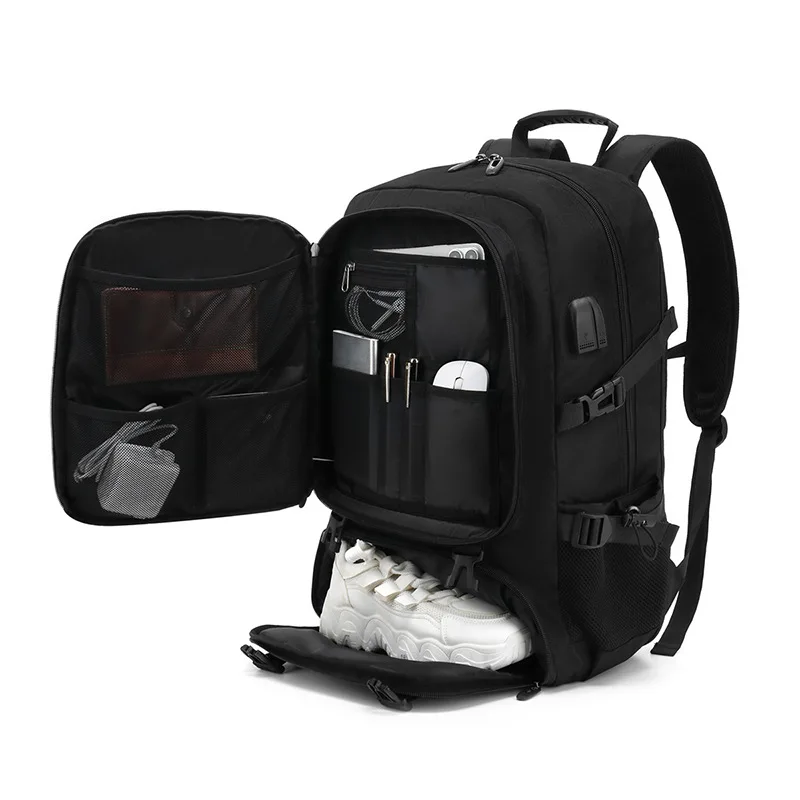
For those requiring maximum professional storage, large leather backpacks provide ample space while maintaining a refined aesthetic appropriate for business environments.
Internal Organization: Maximizing Space Efficiency
The internal layout of a work bag dramatically affects its usable space, often making a well-designed smaller bag more functional than a poorly organized larger one. Key organizational features to look for include:
- Dedicated laptop compartments: Padded, suspended sleeves that protect technology while maximizing surrounding space
- Document dividers: Stiff partitions that prevent papers from bending or crumpling
- Accessory organization: Smaller pockets for items like pens, business cards, and cables
- Security pockets: Hidden or zippered compartments for valuables
- Water bottle/umbrella pockets: Often positioned along the sides for better weight distribution
Pay attention to whether organizational features are adaptable or fixed. Some bags offer modular dividers that can be repositioned or removed, while others have permanently sewn compartments. Each approach has benefits—fixed organization provides stability, while adaptable systems offer customization.
Be wary of bags with excessive padding or too many small compartments. While protection is important, overly thick padding consumes valuable internal space. Similarly, numerous tiny pockets may look impressive but can actually waste space compared to fewer, more versatile compartments.
Properly organizing your leather backpack according to its design intentions can substantially increase its effective capacity, regardless of the overall dimensions.
The Leather Factor: Material Considerations for Size Selection
Leather adds unique considerations to bag sizing decisions. Unlike synthetic materials that remain consistent in weight regardless of size, leather bags become proportionally heavier as dimensions increase. Full-grain leather (the highest quality) is typically heavier than top-grain or genuine leather, adding 1-3 pounds to overall weight depending on bag size.
This weight factor means that while a large canvas bag might remain comfortable when fully loaded, the same dimensions in quality leather could become challenging to carry for extended periods. However, leather provides significant advantages that offset this weight consideration:
- Superior structure that maintains shape and protects contents
- Natural resistance to sagging when properly supported by quality hardware
- Better protection against impacts and environmental factors
- Improved appearance with age rather than deterioration
The thickness of leather also affects capacity. A bag made from thick, rigid full-grain leather will have slightly less internal capacity than a bag with identical external dimensions made from thinner materials.
For long-term durability, larger leather bags require thoughtful design elements like reinforced stitching at stress points, quality metal hardware, and strategic reinforcement. Using appropriate leather waterproofing products becomes even more important as bag size increases, since more leather surface area is exposed to potential damage.
14 Inch Leather Laptop Backpack, Brown Leather Backpack, Men's Leather Backpack, Vintage Leather Backpack
Price range: $177.28 through $199.12 Select options This product has multiple variants. The options may be chosen on the product pageDesigner Men's Backpack, Men's Leather Laptop Backpack, Men's Leather Work Backpack
Price range: $158.04 through $160.04 Select options This product has multiple variants. The options may be chosen on the product page15 Inch Leather Laptop Backpack, Leather Briefcase Backpack
$332.96 Select options This product has multiple variants. The options may be chosen on the product page17 Inch Leather Laptop Backpack, Men's Leather Travel Backpack, Men's Leather Work Backpack
Price range: $106.28 through $143.88 Select options This product has multiple variants. The options may be chosen on the product pageBlack Leather Backpack, Small Leather Backpack, Women's Leather Backpack
Price range: $112.96 through $116.12 Select options This product has multiple variants. The options may be chosen on the product pageLuxury Leather Backpack, Small Leather Backpack, Women's Leather Backpack
Price range: $137.48 through $138.28 Select options This product has multiple variants. The options may be chosen on the product page
Size Comparison Guide: Finding Your Perfect Match
This comparison table provides a quick reference for the main leather work bag size categories:
| Feature | Compact (13”) | Standard (14-15”) | Large (16”+) |
|---|---|---|---|
| Typical Dimensions | 10-12” H × 14-15” W × 2-4” D | 11-13” H × 15-17” W × 4-6” D | 12-14” H × 17-19” W × 6-8” D |
| Capacity | 10-15 liters | 15-22 liters | 22-30+ liters |
| Best For | Minimalists, digital workers, light commuters | Mid-career professionals, consultants, versatile needs | Document-heavy roles, overnight trips, maximum capacity |
| Laptop Size | Up to 13” | 14-15” | 16”+ |
| Weight (Empty) | 1.5-2.5 lbs | 2.5-4 lbs | 4-6+ lbs |
| Portability | Excellent | Good | Moderate |
When making your final selection, prioritize the features that matter most for your specific situation. If your commute involves significant walking or public transit, the weight and comfort factors of smaller options might outweigh capacity benefits. Conversely, if you drive to work and need extensive materials throughout your day, a larger option makes more sense.
Understanding various aspects of leather quality in bags will help you make appropriate tradeoffs between size, weight, and durability based on your budget and needs.
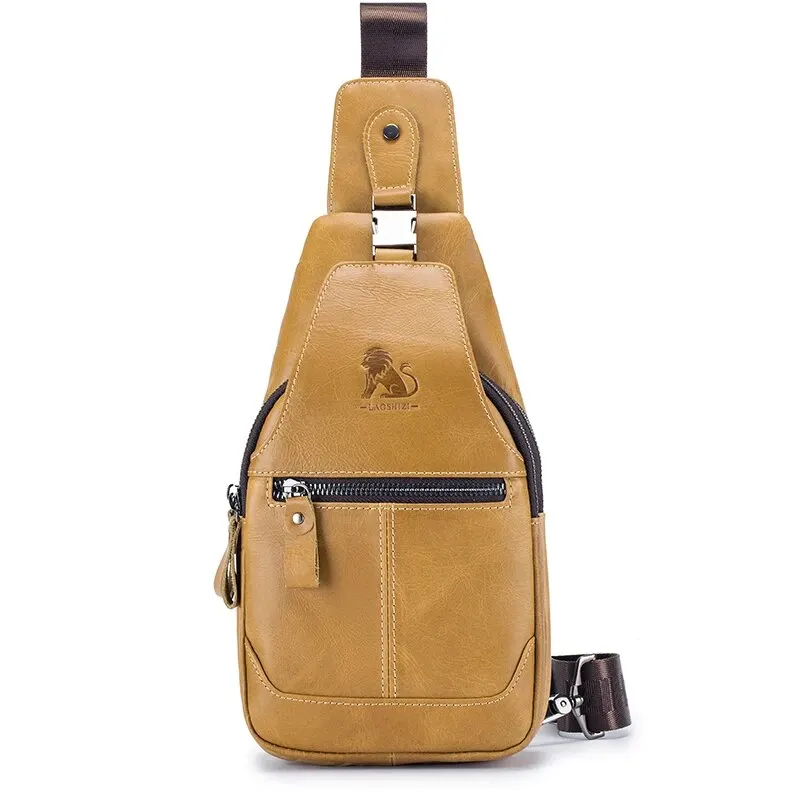
Expert Tips for Selecting the Right Size
Test with actual contents: Before purchasing, gather the items you carry daily and ensure they fit comfortably in your prospective bag. Many retailers allow you to test-pack your items in-store.
Consider future needs: If you’re between sizes, slightly larger is usually better than too small. Technology tends to get slimmer over time, but other carry requirements often expand.
Account for seasonal variations: Remember that winter months typically require more space for layers, umbrellas, and other weather-related items.
Check all dimensions, not just laptop size: A bag advertised as fitting a “15-inch laptop” may have very different overall dimensions between brands.
Consider body proportions: The bag should look proportional to your frame. Very tall individuals may find standard bags look undersized, while shorter individuals might be overwhelmed by large options.
Weigh the empty bag: This often-overlooked test gives you valuable information about how comfortable the bag will be when fully loaded. Add 3-5 pounds to account for typical contents.
Examine the strap system: Larger bags require more substantial straps, reinforced attachments, and potentially padded options for comfort.
For professionals who need flexibility, leather briefcase backpacks offer versatile carrying options that adapt to different professional settings while maintaining appropriate proportions.
Frequently Asked Questions About Leather Work Bag Sizing
Can a 15-inch laptop fit in a bag advertised for 13-inch laptops?
Generally no. While some bags have slight flexibility, manufacturers specify laptop sizes based on the dimensions of the dedicated laptop compartment. Forcing a larger laptop risks damage to both the device and the bag.
How do I know if a bag will look proportional to my height/build?
As a general rule, the bag’s height when worn should not exceed the distance from your waist to just below your shoulder. For briefcases and messenger bags, width should roughly align with your torso width.
Are women’s and men’s professional leather bags sized differently?
While some manufacturers market bags by gender, the primary differences are typically in styling rather than dimensions. Focus on finding the right fit for your specific needs regardless of gender labeling.
Does leather stretch to accommodate more items over time?
Quality leather will develop some flexibility over time, but intentionally overstuffing a leather bag can damage stitching and structural elements. Proper waterproofing for leather bags helps maintain appropriate structure as the bag ages.
How much heavier is a large leather bag compared to a medium one?
On average, a large leather work bag weighs 1-2 pounds more than a medium-sized bag of similar quality. This difference becomes more noticeable when both bags are fully loaded.
Making Your Final Decision: Balancing Size, Style, and Functionality
Selecting the perfect leather work bag size requires balancing practical needs with professional appearance and physical comfort. Remember that the right size enhances both your efficiency and presentation—a bag that’s constantly overstuffed looks unprofessional, while one with wasted space adds unnecessary weight.
When making your final decision, prioritize your most frequent use case rather than occasional scenarios. If you carry extensive materials once a month but travel light most days, a medium bag with expansion capabilities might be more practical than a permanently large option.
Quality leather work bags represent a significant investment, but when properly sized, they offer exceptional longevity and function. The perfect bag shouldn’t just accommodate your current needs but adapt to your professional journey over many years.
Understanding how functionality in men’s leather bags translates across different sizes will help ensure you select a bag that serves both practical and aesthetic purposes in your professional life.
Leather Bag Maintenance Based on Size
Proper maintenance requirements vary somewhat by bag size:
- Small bags: Often need more frequent conditioning as they tend to experience more friction and handling relative to their surface area
- Medium bags: Require balanced attention to high-touch areas like handles and corners
- Large bags: Need special attention to prevent sagging and structural deformation, particularly along the bottom and at stress points
Regardless of size, all leather bags benefit from:
– Regular cleaning with appropriate leather cleaners
– Conditioning 2-4 times annually (more in dry climates)
– Storage with proper support to maintain shape
– Protection from direct sunlight and extreme temperature changes
Larger bags should be stored with internal support (tissue paper or an airbag insert) to maintain their shape when not in use. Medium and large bags with extensive hardware should have this hardware cleaned and occasionally treated to prevent tarnishing or wear on the leather.
Adapting Your Bag Choice to Changing Professional Needs
As your career evolves, your bag requirements will likely change. Watch for these signs that you may need to reconsider your bag size:
- Consistently carrying items outside your bag (under your arm, in separate totes)
- Struggling to find items buried in an oversized bag
- Physical discomfort after carrying your bag during normal workdays
- Visible strain on the bag’s seams, handles, or structure
Many professionals find that having two complementary bags—perhaps a larger option for high-capacity days and a sleek, compact choice for lighter requirements—offers ideal flexibility. This approach allows you to project the appropriate professional image for different contexts while protecting your investment pieces from excessive wear.
Technology trends continue to influence professional carrying needs, with smaller, lighter devices potentially reducing required capacity. However, this is often offset by an increasing need to carry additional accessories, power sources, and connectivity tools.
